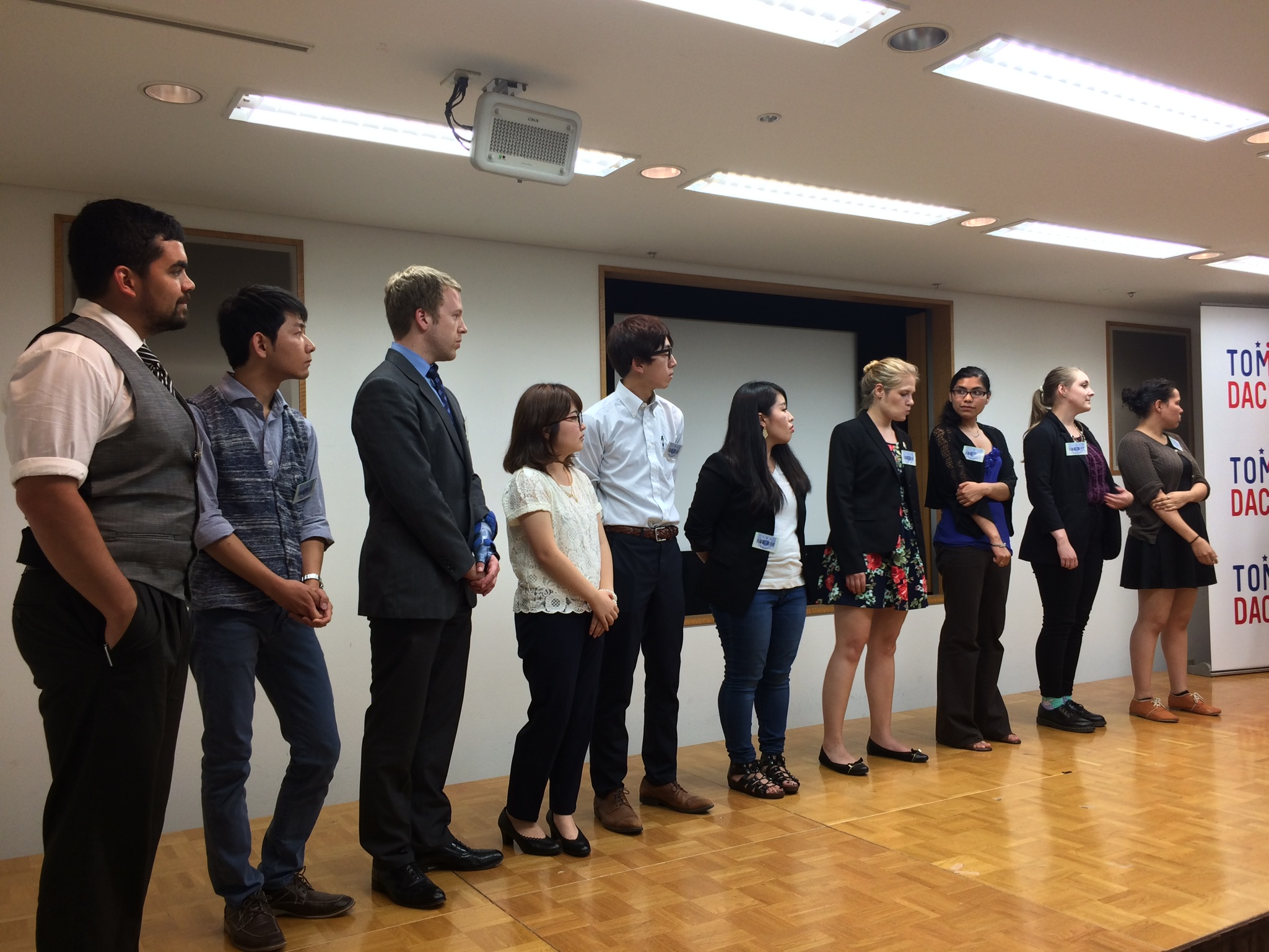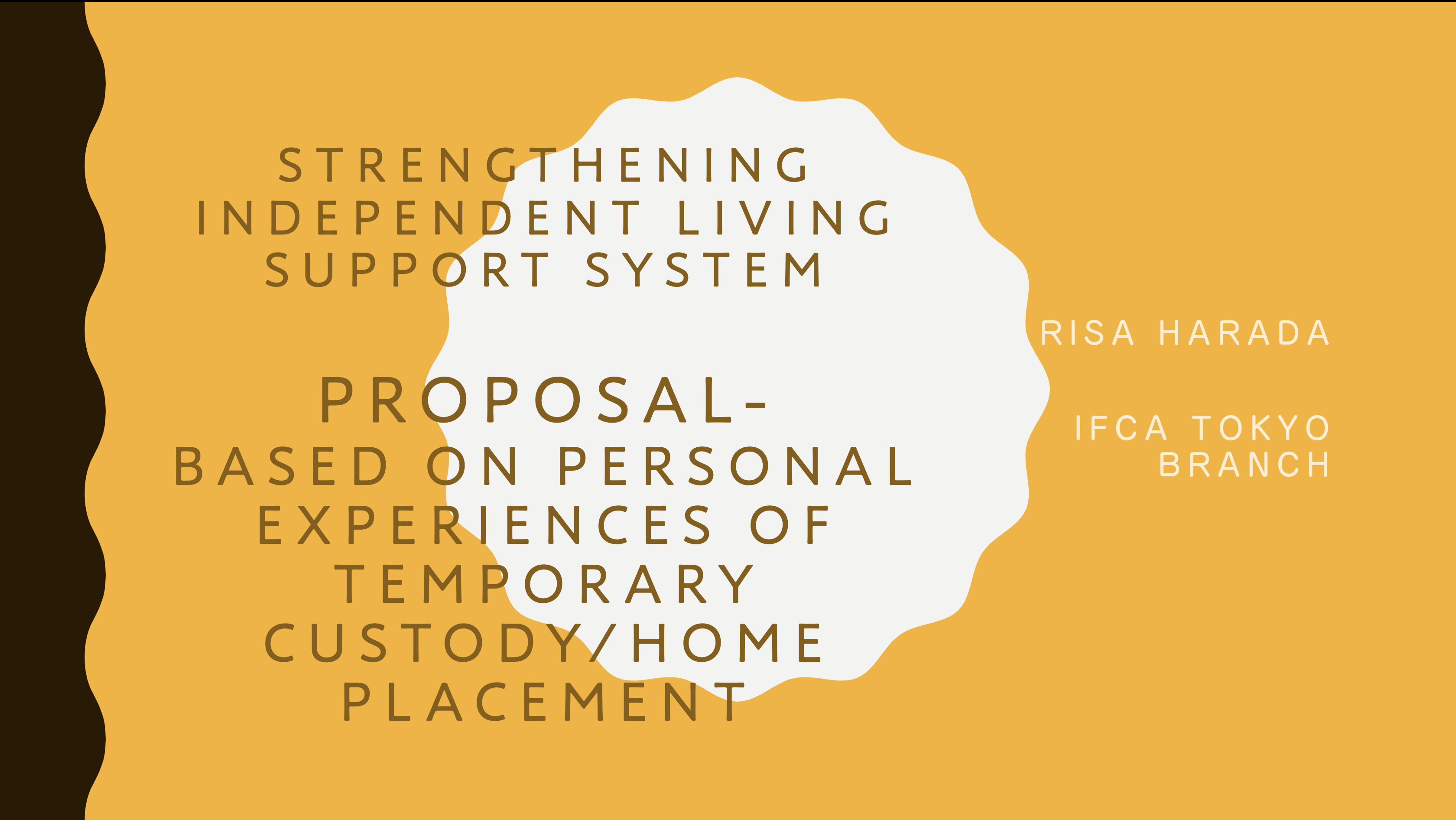Louie Gasper
I’ve had the amazing opportunity to advocate for foster youth in many different ways since 2011, when I was thirteen. In 2011, I was living in a group home in California and would frequently runaway or act out because of my misplaced energy and life circumstances. I looked for outlets in a plethora of areas – sports, academics, etc. and they worked but I still felt like I needed to do something more with my life. One time, I attended an Independent Living workshop where some older former foster youth spoke about the impact of advocacy from an organizational level as well as its’ impact in their personal life. So I went over to their next meeting and they told me all about what foster youth advocacy was and about California Youth Connection (CYC) –
California Youth Connection (CYC) is a youth led organization that develops leaders who empower each other and their communities to transform the foster care system through legislative, policy, and practice change. From then on I would sporadically go to meetings, each time listening more each time. On the weekend of my thirteenth birthday, I got to attend my first conference with CYC. That conference taught me a plethora of things. But most importantly it taught me that I had a voice, and I was not alone in my experiences or my burning passion to advocate based off of those experiences. It also gave me normalcy in many ways because it was the first time I had met so many foster youth with the same circumstances and level of understanding. From that point, I made the decision that a lot of us make — to dedicate our lives to bettering the foster care system. Although I didn’t know what I would do exactly, I knew I would do it. Flash forward a few years and I became the first Chairman of Policy for CYC, working first-hand to eradicate group homes statewide and battling the doctors that over-medicate our foster youth. I’ve also gotten to serve in a variety of roles as a legislative committee member, chapter president, advisory board member, conference facilitator, treasurer, and speaker. This past year, I have also had the amazing opportunity to attend FosterClub’s All-Star internship. All Star interns are recognized as leaders on the national foster care scene, and through our stories continue to affect the landscape of policy and practice, significantly improving the lives of children and youth still in foster care. It has opened my eyes to hear such powerful youth voices from conferences all the way in Orlando, to on the Capitol steps of DC and all around America. It is so refreshing to know that whether I’m fifty miles away from home or five hundred, there are people just as dedicated to making foster care a better place. Foster care advocacy has added a significant amount of normalcy to my life because I’ve learned how to make stronger, more permanent friendships with people who are similar to me and it has helped me create a chosen family of foster youth that offer me love and support I couldn’t get from anywhere else.
Advocacy Organizations & Structures
Organized foster youth advocacy comes in variety of levels. Although there are many independent efforts that work with foster youth advocacy the four most common types are national boards on child welfare, statewide boards on child welfare, national advocacy non-profits, and statewide advocacy non-profits. Foster youth Boards are often commissioned by the government and operate at less traffic than an advocacy non-profit which is usually partially funded by the government and led by a board of directors as well as usually a youth advisory board (in some form or another).
National Advocacy Non-Profits:
FosterClub: After a year on the internet, FosterClub became a popular site for young people in foster care. The children and youth who became members were able to connect with peers, share their experiences with others (confidentially), read inspiring stories about famous former foster kids, and find answers to their questions using the first 24-hour, 7-days a week resource built specifically for them.
Other Organizations: National Foster Youth Institute, Foster Youth In Action, Foster Care Alumni of America
Statewide Advocacy Non-Profits:
California Youth Connection: Foster youth in California decide to create California Youth Connection (CYC), a new foster youth-led organization modeled after the successful Canadian Youth in Care Network and dedicated to youth empowerment, youth development, and policy advocacy.
*Most statewide advocacy organization divide into regions/chapters to do advocacy on a local level and come together to do it on a statewide level.*
The Mockingbird Society (Washington state), Youth Training Project, Youth Shine (Florida)
National Boards:
National Policy Council on Foster Care: This is a group of former foster youth around the nation that work solely with passing and advocating for national policies in child welfare. They are partnered with Fosterclub and Foster Care Alumni of America.
Statewide Boards:
Passion to Action (Washington state): This is a group of former foster youth around the state that work solely with passing and advocating for statewide policies in child welfare and making sure they are fully implemented after being passed as a bill. They are overseen indirectly by the Governor.
Other Statewide Boards: IFYAB (Idaho Foster Youth Advisory Board), Nevada Youth Advisory Board
Through these boards and organizations, there are three main ways that youth advocacy is evident – not all three are in every organization but it’s likely your program will be more effective if it has an element of all three:
Policy & Legislative: This is a way where youth are at the forefront of advocacy through testifying at legislative hearings, meeting with senators, and drafting bill proposals. This is more indirect impact, however it is a much larger cycle so the impact of legislative advocacy could benefit a whole state of foster youth.
Training & Curriculum: This is a way where youth are at the forefront of advocacy through facilitating trainings to child welfare professionals and foster youth, as well as developing relevant curriculum for those audiences. This is somewhat direct – somewhat indirect work, where you have the ability to teach key elements of a workshop, but ultimately it’s up to the attendees to implement it in their lives.
Youth Empowerment: This is a way where youth are at the forefront of advocacy through encouraging and supporting each other on projects and life in general. It is perhaps the most direct advocacy work because anybody can do it and it can be fully self initiated to help others.
Strategic Sharing = Effective Advocacy (Personally and Organizationally)
Strategic Sharing: For the young person in care, knowing how to strategically navigate through tough topics surrounding foster care, or any other discussion, can influence others in a positive way, without making anyone uncomfortable including the individual sharing. It is vital for young people to be equipped with strategic sharing in both their personal lives as well as working within advocacy. To help a youth in strategic sharing, be open to conversation and then help them analyze their settings. Have them think critically: What would be most relevant to say? Is this appropriate? Does this clearly get the message across? This will help not only in advocacy but the ability applies in everyday life.
California Legislative Advocacy Accomplishments (eighteen bills passed):
* State Foster Care Ombudsman – California has its first foster care ombudsman because of the efforts of CYC youth on California Senate Bill 933 (Thompson, Chapter 311, Statutes of 1998). The ombudsman’s office has a statewide toll free number, where youth can register complaints or concerns regarding the foster care system.
• Extension of Foster Care Services Until Age 21 – CYC celebrated the landmark passage of California Assembly Bill 12 (Bass and Beall, Chapter 559, Statutes of 2010). CYC partnered with child welfare advocacy organizations for 2 years to ensure the passage of AB 12.
• Foster Youth Rights – After several attempts to put the rights of foster youth into California law, CYC realized success in 2001 as the foster youth bill of rights became law. AB 899 (Liu, Chapter 683, Statutes of 2001) consolidates all of the rights of foster children into a common location in California law.
Foster Youth Bill of Rights: This is a “bill of rights” packet that is handed to every youth that enters the foster care system which states all of their rights categorically. Some of the rights are listed below. In addition, each individual capitalized section, for example “CONNECTION WITH A CARING ADULT” has a set of rights listed below on the foster youth bill of rights similarly structured to he listing right below.
You have the right to:
be treated with respect
go to religious services and activities of your choice send and get unopened mail (unless a judge says someone else can open your mail)
contact people who are not in the foster care system (like friends, church members, teachers, and others)
make contact with social workers, attorneys, probation officers, CASAs, foster youth advocates and supporters, or anyone else involved with your case
be told about your placement by your social worker or probation officer
You have the right to CONNECTION WITH A CARING ADULT; RIGHTS AT COURT; HEALTH RIGHTS; SCHOOL RIGHTS;
NOT BE TREATED DIFFERENTLY; YOU HAVE THE RIGHT TO DO SOME THINGS ON YOUR OWN;
YOU HAVE FAMILY RIGHTS TOO. YOU CAN PARTICIPATE IN SOCIAL ACTIVITIES:`
This is something that has been advocated for and passed in a few different states now, and now has such a great impact because it allows for personal advocacy in that because of this law youth can have access to all of their rights and advocate for themselves in whatever placement circumstance they may be.
Not excluding California Youth Connection, most of these boards and non-profits have advocated for and passed different policies and legislation for the betterment of the foster care system for topics such as building permanency, positive relationship building, navigating the child welfare system, foster youth rights, health and educational rights, and overall child welfare reform and it wouldn’t be without the voices of the youth.








Leave a Reply